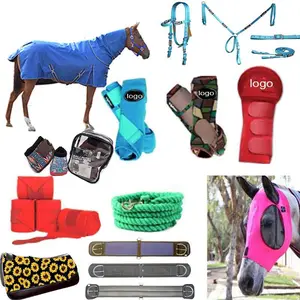
All categories
Featured selections
Trade Assurance
Buyer Central
Help Center
Get the app
Become a supplier

(1069 products available)




























A body protector horse riding is a protective vest designed to provide the rider with safety and comfort in case of a fall or collision. It is an essential piece of equestrian safety gear. There are various body protectors available on the market, which include the following:
Traditional hard shell body protectors
This type of body protector is built with hard plastic outer shells and foam inner liners that absorb impact. They offer excellent protection against punctures and abrasions. Also, they are durable and long-lasting; however, they may be bulky and less comfortable compared to other options. In addition, they have limited flexibility and breathability.
Soft shell body protectors
The soft shell body protector has soft foam padding that provides impact absorption. They are lightweight, flexible, and more comfortable than traditional hard shell protectors. However, they may offer less protection compared to hard shell protectors and have reduced durability.
Hybrid body protectors
Hybrid body protectors combine hard plastic outer shells with soft foam inner liners. They offer a balance between protection, comfort, and flexibility. They are suitable for various riding disciplines and levels of risk. However, they can be bulkier than soft shell protectors and more expensive than traditional hard shell protectors.
Airbag body protectors
Body protectors with airbags are an innovative option that uses CO2 canisters to inflate airbags upon impact. The inflated airbags provide additional protection to the ribs, spine, and lower back. They are lightweight and less bulky compared to traditional protectors. In addition, they offer excellent protection and shock absorption. Nonetheless, they are more expensive and require regular maintenance.
A body protector for horse riding has many scenarios. Here are some of them:
Choosing the right body protector horse riding is a critical decision for every rider, whether a beginner or an experienced equestrian. Here are several key factors to consider when selecting a body protector.
Standards and Certifications
The first thing to look for when buying a riding body protector is safety standards. Ensure the protector meets the required safety certifications. The British Standard (BS) 7933:2000 and the American Society for Testing and Materials (ASTM) are some known standards. The protectors that meet these standards are tested to ensure they have the necessary impact protection. Buying a certified body protector will give you confidence knowing it meets the required safety standards.
Fit and Comfort
Another important factor to consider when choosing a body protector is its fit. The horse riding body protector should fit snugly to offer the required protection without being too tight. Ensure the protector has adjustable straps so you can adjust it to fit your body. Additionally, look for body protectors with breathable materials and ventilation. This will ensure you stay comfortable and cool even when you are riding for long hours.
Protection Level
Body protectors come in different levels of protection. Consider the type of riding you will be doing and the potential risks involved. If you are planning on doing high-risk activities like eventing or jumping, look for a body protector with higher impact protection. On the other hand, if you are doing low-risk activities like dressage or flatwork, a standard level of protection may be sufficient.
Compatibility with Other Safety Gear
It is also important to consider how the body protector will work with other safety gear. If you are planning on wearing an equestrian helmet, make sure the body protector is compatible with it and will not interfere with its fit or functionality. Similarly, if you are planning on wearing other protective gear, like arm or leg guards, make sure the body protector will work with them as well.
Body protectors for horse riding come with various functions, features, and designs that are tailored to provide safety, comfort, and performance enhancement for riders. Here are some of them:
Q: Why is a body protector important in horse riding?
A: A body protector is crucial in horse riding as it provides vital safety and protection. It absorbs impact and shields the torso from injuries in case of falls or collisions. Especially in high-risk disciplines like cross-country or jumping, a body protector can significantly reduce the risk of serious injury and enhance the rider's confidence.
Q: How does a body protector for horse riding fit properly?
A: To ensure a comfortable and suitable fit, a body protector for horse riding should snugly fit the torso without compromising movement. The protector should stay in place when the rider is seated, covering the entire body area. Adjustable straps can help achieve a customized fit. Moreover, the protector's size and shape should correspond with the body type and the wearing style.
Q: What materials are commonly used in body protectors for horse riding?
A: Most body protectors are constructed with high-density foam panels or EVA for impact absorption. Additionally, they have hard shell plates for extra protection. The outer layer is made of durable materials like polyester or nylon, which are abrasion-resistant. The body protector may also have moisture-wicking liners to keep the skin dry and comfortable.
Q: Can a body protector prevent all types of injuries in horse riding?
A: While a body protector significantly lowers the risk of specific injuries in horse riding, it cannot prevent all types of injuries. A body protector mainly protects the torso area, which includes the spine, ribs, and internal organs. Riders' heads and limbs can also experience injuries. Other parts of the body may require additional safety gear, which includes helmets and limb guards. However, when used alongside other safety equipment, a body protector can provide comprehensive protection and enhance the rider's overall safety.